
| What is Flavor and Fortune? |
| How do I subscribe? |
| How do I get past issues? |
| How do I advertise? |
| How do I contact the editor? |
Read 12973042 times
Connect me to:
| Home |
| Articles |
| Book reviews |
| Letters to the Editor |
| Newmans News and Notes |
| Recipes |
| Restaurant reviews |
| Article Index (all years, slow) |
| List of Article Years |
| Article Index (2025) |
| Article Index (last 2 years) |
| Things others say |
| Related Links |
| Log In... |
| Authors |
| Categories & Topics |
Taiwan: Seeing and Eating Gastronomic Delights
| by Jacqueline M. Newman |
Chinese Food in China, Hong Kong, and/or Taiwan
Winter Volume: 2006 Issue: 13(4) page(s): 10, 11, 12, 13, and 35
EATING PROPERLY: Food in Taiwan, officially called The Republic of China (ROC), is consumed by more than twenty-four million folk living on about fourteen thousand square miles of land and on several large and small nearby islands.
Taipei, its the capital city, is twice as densely populated as is the rest of the country. Most people are Han Chinese, the rest are eleven indigenous minority population groups. In the ROC they are not so called, but rather are called 'aborigine people' or yuan zhu min, in Chinese. They make up less than two percent of the total population. China, correctly called The People’s Republic of China or the PRC, considers the Hakka as a minority group, not so in the ROC; here they comprise ten percent of Taiwan’s total population.
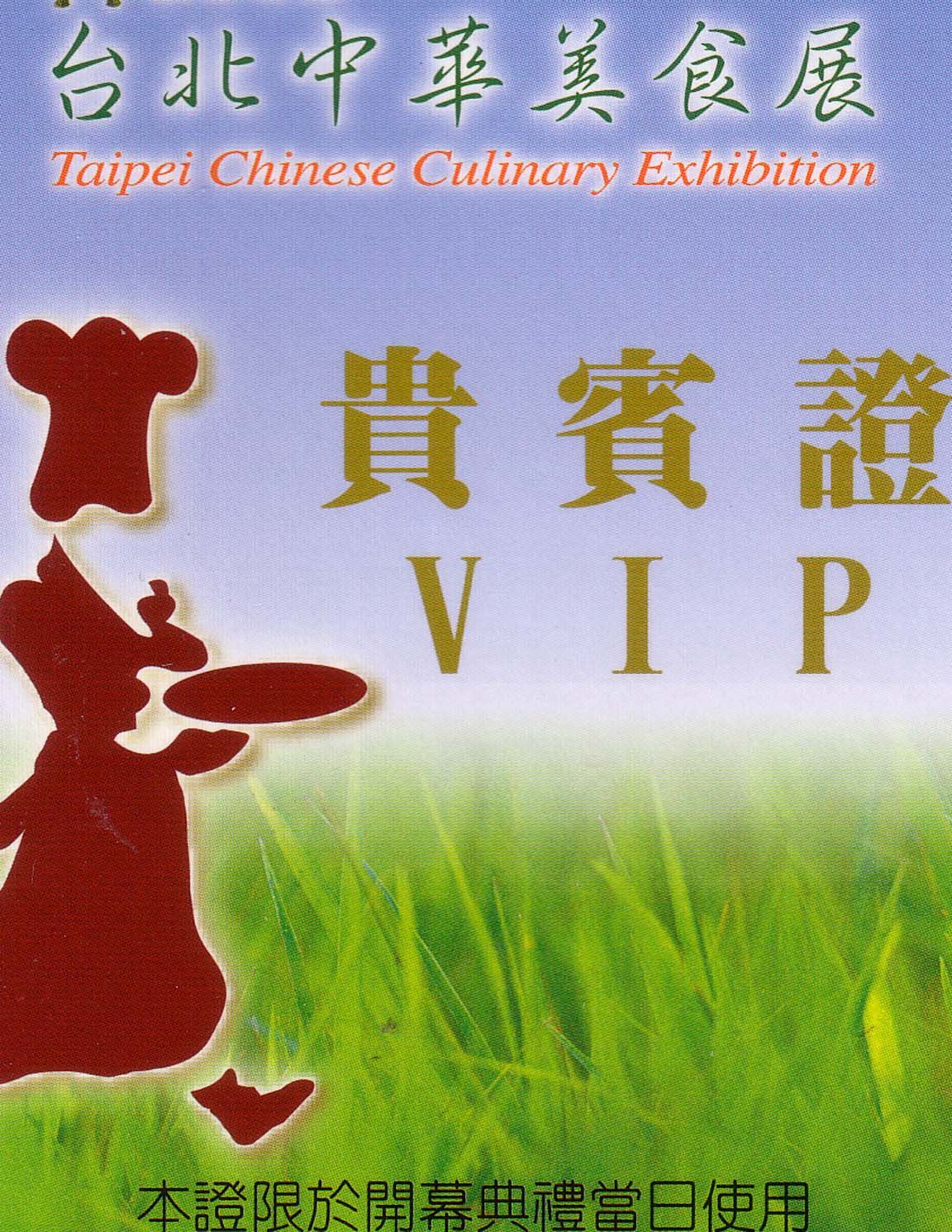 Taipei, a flat urban sprawl, is an island with its capital almost surrounded by mountains. Throughout this country, food is an important part of the culture, probably more so than in the PRC. Here, local foods have cultural influences from the Fujian Province and from an earlier Min culture. In addition, there are influences from Japan because Taiwan was ruled by them for some fifty yeas.
Taipei, a flat urban sprawl, is an island with its capital almost surrounded by mountains. Throughout this country, food is an important part of the culture, probably more so than in the PRC. Here, local foods have cultural influences from the Fujian Province and from an earlier Min culture. In addition, there are influences from Japan because Taiwan was ruled by them for some fifty yeas.
Etiquette In Taipei and throughout the country is related to eating. There are foods available from every PRC province, and Chinese rules for their consumption. They are important to know should you visit the ROC or the PRC, or another country with a huge Chinese population. You may get a by doing dumb things as foreigners, but getting accepted belongs to those who know how to eat and those who treat food properly.
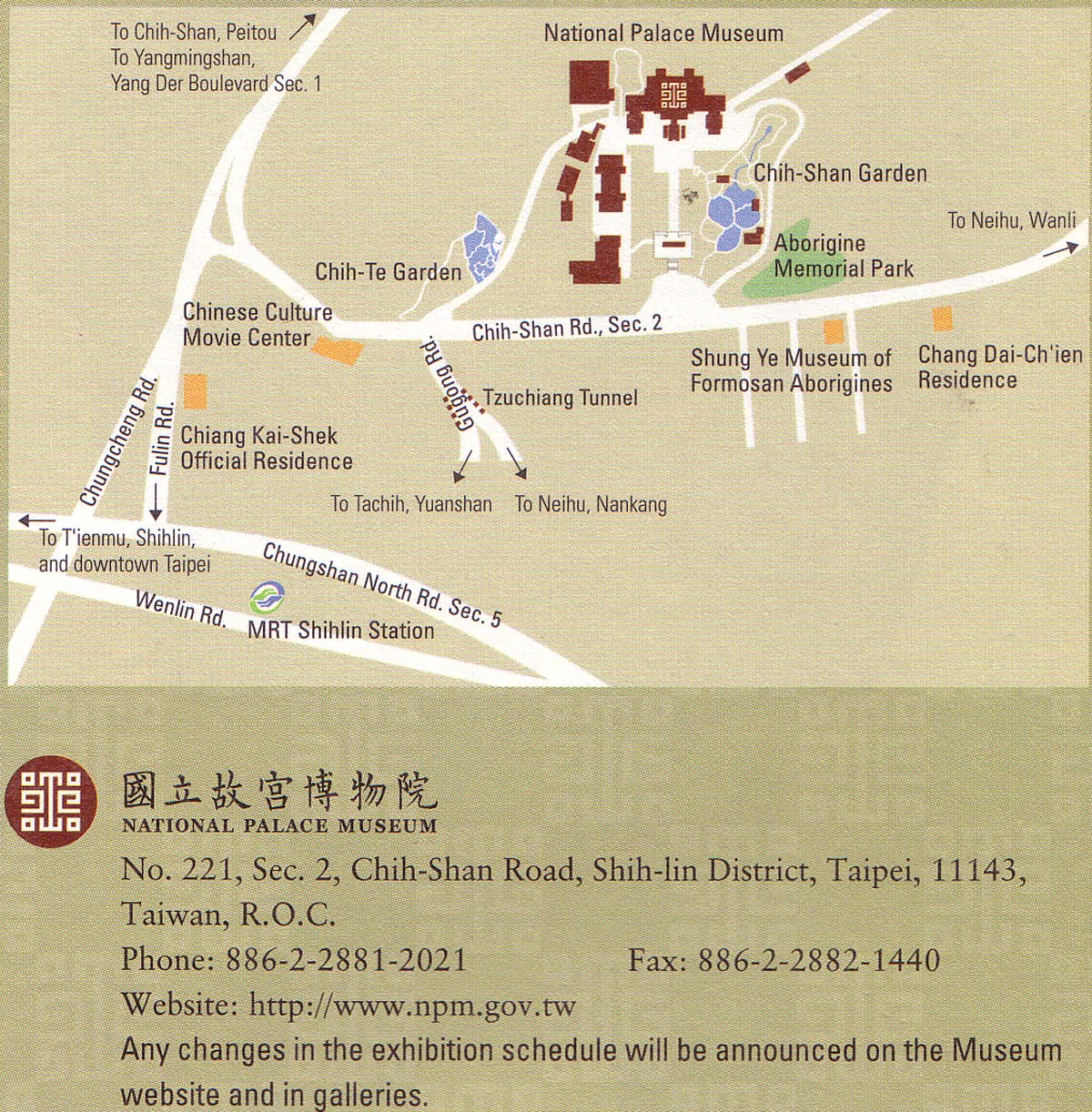 Eating out or in someone's home, always use serving utensils. Do not use your own chopsticks or flatware even when serving yourself. Be sure to wait for your host or hostess to serve you and others, or wait until they say it is OK to serve yourself and/or start to eat. Do not fiddle with your chopsticks. Hands in lap being patient is always correct. During a meal, never use your chopsticks as pointers, and do not use your fingers either.
Eating out or in someone's home, always use serving utensils. Do not use your own chopsticks or flatware even when serving yourself. Be sure to wait for your host or hostess to serve you and others, or wait until they say it is OK to serve yourself and/or start to eat. Do not fiddle with your chopsticks. Hands in lap being patient is always correct. During a meal, never use your chopsticks as pointers, and do not use your fingers either.
As to those chopsticks, learn how to use them correctly. Practicing eating peanuts with plastic ones can make you a master. In Taiwan, China, or elsewhere, do not stand your chopsticks up in any dish. To the Chinese, they resemble incense burned at funerals; that makes this behavior inappropriate at a dinner table.
Want a tasty morsel in a particular serving dish? Be polite and offer it to an elder. With luck, they might be astute enough to serve you an equivalent food morsel. Politeness means waiting for the host or hostess to toast you before taking a drink. If you are very thirsty, lift your glass, toast someone else, then drink with them. Never drink without someone toasting you or you toasting them.
Should you not want more of a beverage be it tea or any tippler, do not empty you glass or cup. If you do, someone will surely fill it up. Same for food. Leave an empty plate in front of you and someone is sure to serve you more food. If you can eat no more, leave your chopsticks on the plate at a point furthest from you. Never cross them then or at any other time. Crossed chopsticks mean the end, even the end of life, so that way they have negative connotations. Chances are with away from you, no one will offer you anything else to eat without asking first.
Keep in mind that rice and other grains represent lots of toil on the part of the farmer. Do not waste a single one. Parents tell youngsters that every grain left in the bowl means a pock-mark on the face of your intended. Parents also tell offspring to leave the table seventy percent full. Use these as lessons for your own behavior. Do not gorge yourself, even though the host or hostess encourages you to have more.
When appetizers or small first courses arrive, note the number of items on one plate and the number of folk at your table. Usually, there is one per person, or very close to that number. Therefore, take a hint and take no more than one of each item served.
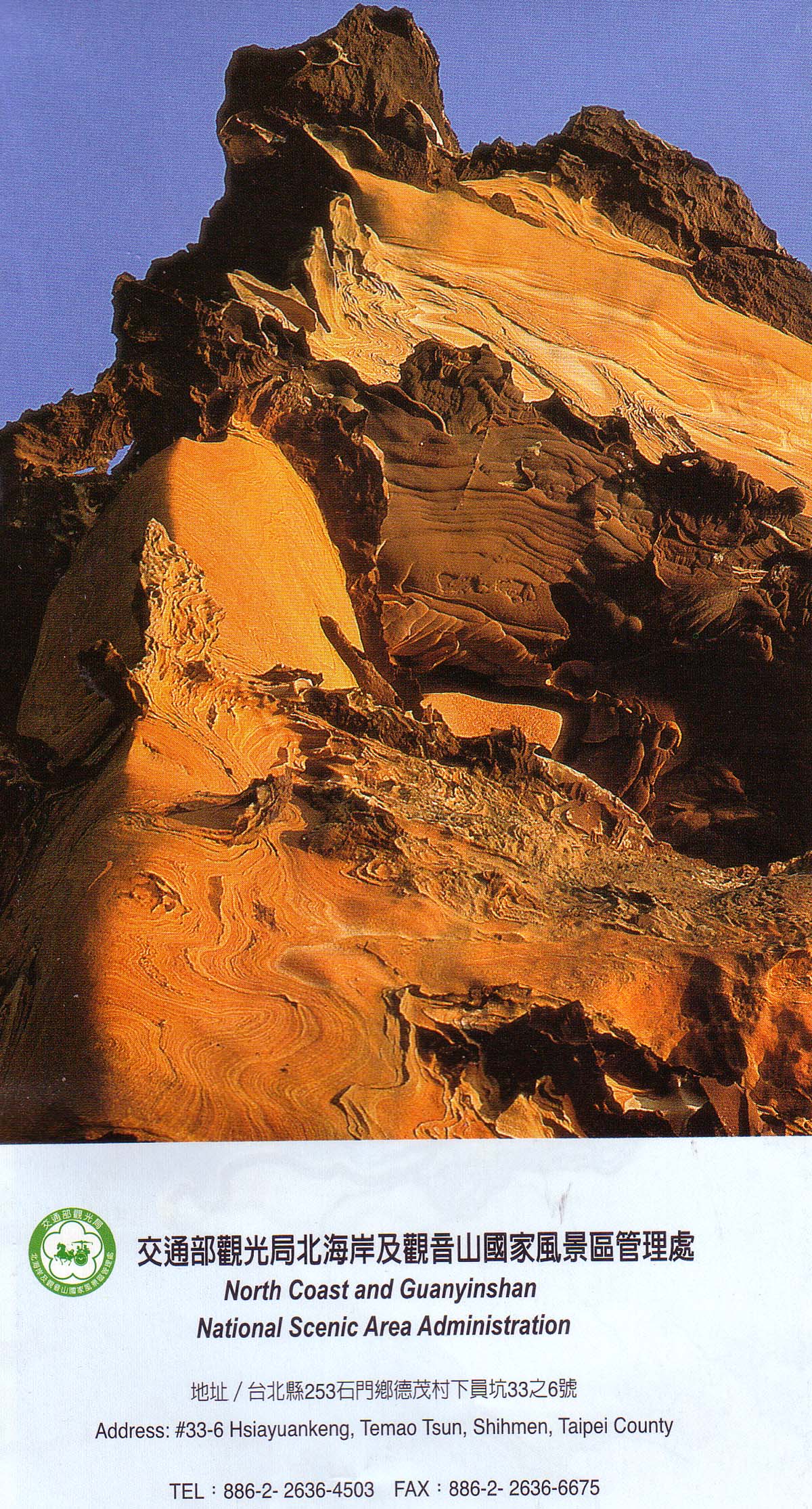 When invited for a meal, arrive on time, wait to be told where to sit, then sit down quickly. When the meal is over, say thanks and leave promptly. The host or hostess needs to pay the bill, and it is considered rude to do so while a guest remains. So exit quickly and quietly. In someone's home, do not stay for tea and talk. When dinner is over, say many thanks, then even if told not to rush off. Politeness requires that you leave promptly after the meal is over.
When invited for a meal, arrive on time, wait to be told where to sit, then sit down quickly. When the meal is over, say thanks and leave promptly. The host or hostess needs to pay the bill, and it is considered rude to do so while a guest remains. So exit quickly and quietly. In someone's home, do not stay for tea and talk. When dinner is over, say many thanks, then even if told not to rush off. Politeness requires that you leave promptly after the meal is over.
One last thing, do not offer to pay a bill if you were invited to a meal. That is an insult to your host or hostess. Also do not offer to split a bill, yet another insult. There is a way to reciprocate. Invite your host for a similar or a slightly better meal. Do not make the return meal too much better than the one you were a guest at. That, too, is an insult.
FESTIVALS: in the ROC mirror many in the PRC. January/February starts the year. They also call the one for the New Year, the Spring Festival. It and most other holidays are scheduled using a Lunar calendar. Lantern Festival follows on the fifteenth day of the first lunar month. Mazu's Birthday is worshiped on the twenty-third day of the third lunar month in April/May. Soon thereafter, there is a Taiwan Goddess of the Sea Festival. The Dragon Boat Festival is in May/June on the fifth day of the fifth lunar month. Mid-Autumn Festival is on the fifteenth day of the eighth lunar month, usually late September or early October.
The aborigine people, like PRC’s ethnic minority peoples have some of their own holidays. Some are specific, most are celebrated by all. These include the Bubun Festival, the Dahwu Flying Fish Festival, Harvest Festival, and the Sacrifice to the Short Spirits Festival.
TOURISTIC SITES: in Taiwan are many. Just a few are discussed below. For others consult a guide book such as National Geographic Traveler Taiwan or another guide book available for purchase, and check out touristic blurbs of interest.
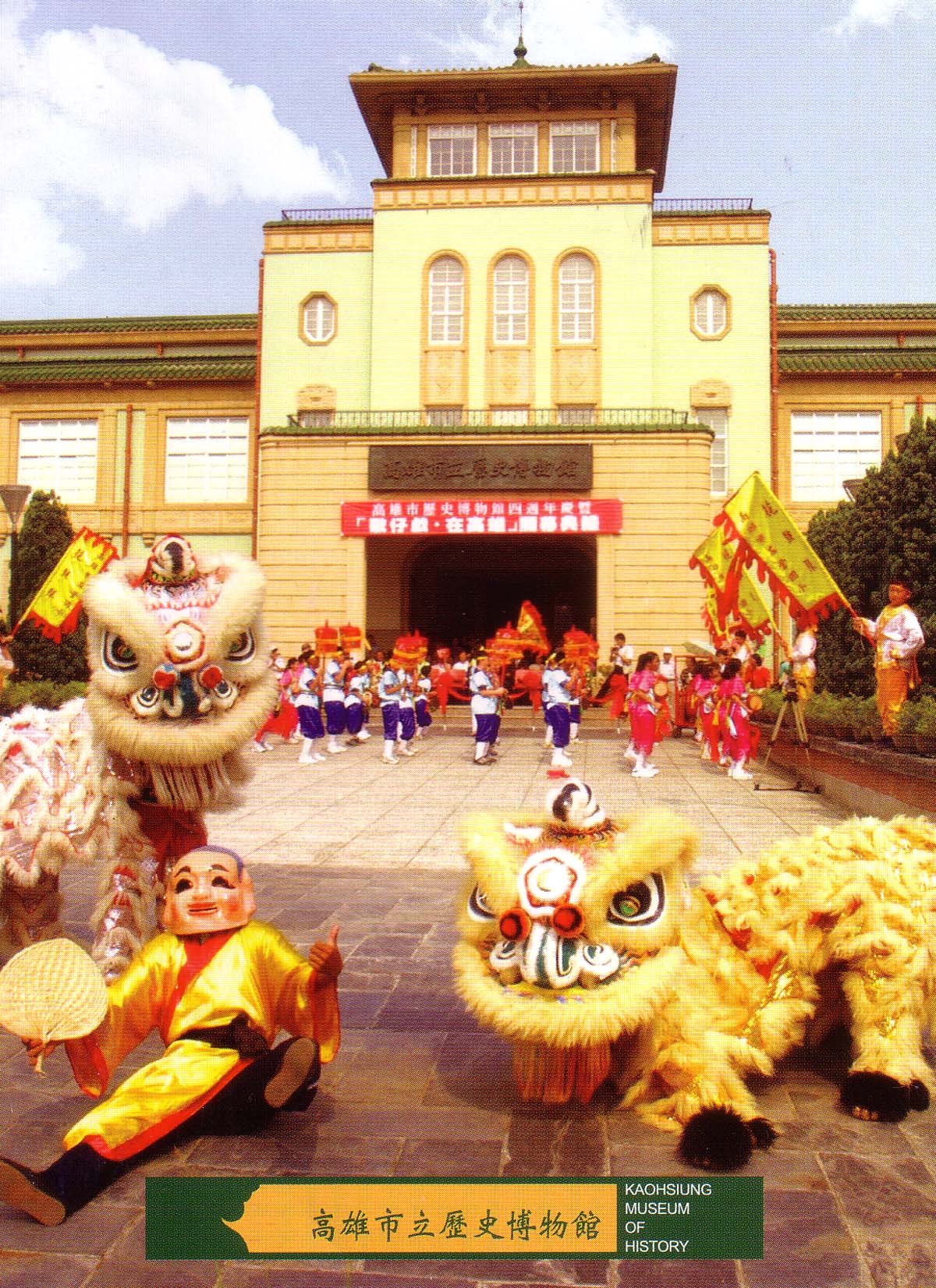 There is much to see in the ROC. In Taipei, do go to the National Palace Museum at No. 221, Sec. 2, Chih-San Road in the Shih-lin District. Most artifacts there are from the most recent or the Qing Dynasty. There is a smattering from earlier eras. Check out times and special exhibits at their website: www.npm.gov.tw
There is much to see in the ROC. In Taipei, do go to the National Palace Museum at No. 221, Sec. 2, Chih-San Road in the Shih-lin District. Most artifacts there are from the most recent or the Qing Dynasty. There is a smattering from earlier eras. Check out times and special exhibits at their website: www.npm.gov.tw
Other cities have museums, too. The Kaohsiung Municipal Museum of History, in the city of that name, is new and nifty. It and other museums have special exhibits and rotating ones. They can be checked out at: www.w4.kc.gov.tw
Besides beauty in museums, Taiwan has lots of scenic beauty. The North Coast Guanyinshan National Scenic Area is one such. The main administration area for information is at 33-6 Hsiayuankeng, Temao Tsun, Shimen, in Taipei County. Their website is: www.northguan-nsa.gov.tw
Another beautiful place is Mount Ali in a Forest Recreation Area of the same name. On top of a great scenic and touristic mountain, there is much to see there and a fine restaurant, discussed below. Each of these places has at least one brochure. The Taiwan Visitors Bureau has many as does your local travel agent. Relating to food, we found a great brochure called Local Snacks of Taiwan. It is illustrated near the end of this article. Many snack foods are featured at the Taipei Food Festival. Admission to this fun food fest is available in advance or at the door.
They kindly gave us a VIP pass (shown on the first page of this article) to check it out. This festival hosts local eateries selling their wares. Thirty-one were in attendance the year we attended. A few of them are discussed below, after some great restaurants.
EATING IN TAIWAN: It can be done in great restaurants in Taipei or elsewhere in this tobacco-leaf-shaped island. Doing so anywhere in the capital, nicknamed 'Gourmet City,' shows how true that is. Everywhere in the entire country, residents and visitors deem eating a gourmet delight. Taiwan's cities, townships, and rural places all have places for divine hot-pot meals, delicious dumplings, super snack meals, delicious dinners, and beautiful banquets. While visiting you can, and we did enjoy many of them.
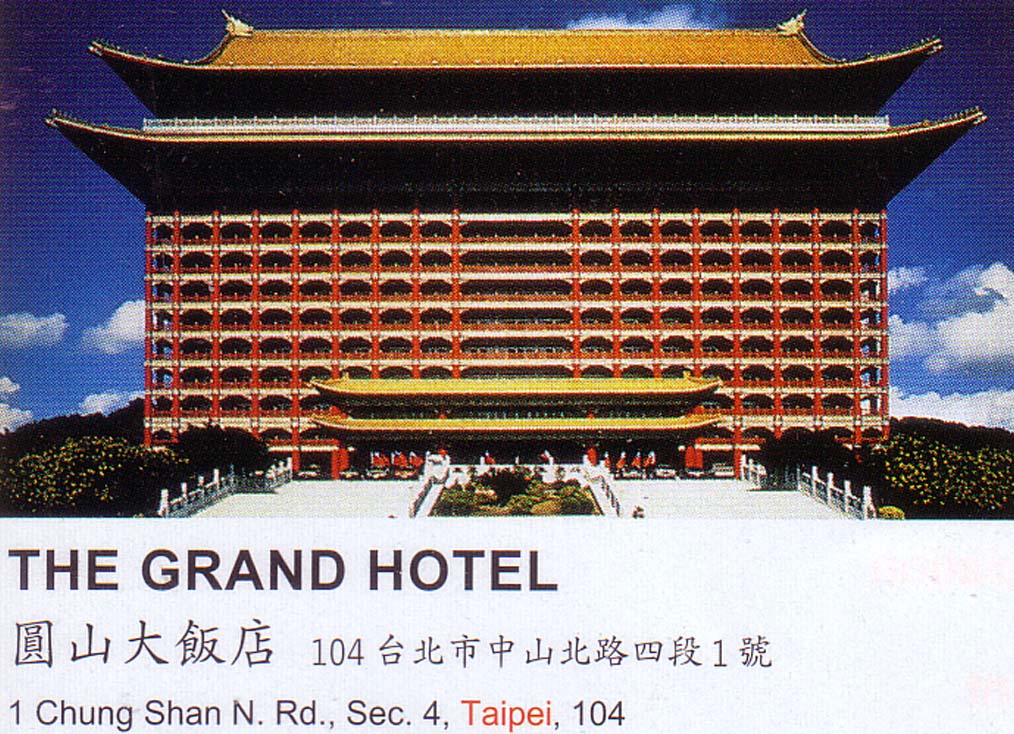 Once known as Formosa, every place we ate at was a meal or snack tour-de-force. A phenomenal pair of banquets eaten at Taipei’s fabulous Fu Yuan Restaurant were reported in this magazine’s Volume 13(2) on pages 20 and 21. There were many other culinary delights all over the island. We went when the Taipei Chinese Culinary Exhibition was at its World Trade Center. That, too, is something to see. We even spent several hours in that building’s English-language bookstore, snacked there, and browsed in the many floors in their upscale boutiques.
Once known as Formosa, every place we ate at was a meal or snack tour-de-force. A phenomenal pair of banquets eaten at Taipei’s fabulous Fu Yuan Restaurant were reported in this magazine’s Volume 13(2) on pages 20 and 21. There were many other culinary delights all over the island. We went when the Taipei Chinese Culinary Exhibition was at its World Trade Center. That, too, is something to see. We even spent several hours in that building’s English-language bookstore, snacked there, and browsed in the many floors in their upscale boutiques.
Below are but a few eateries we enjoyed while in Taiwan. Bet you can find many others equally as good. We plan to search out others on future trips. Do tell us of great places you encountered.
GOLDEN DRAGON RESTAURANT is in the Grand Hotel at 1 Chung Shan N. Road, Section 4 in Taipei; phone: (886 2) 2886-8888 was where we had our first meal in Taiwan. It was a dim sum lunch in a palatial room in a palatial looking hotel aptly named The Grand Palace. Unfortunately, service did not match looks in this one eatery. Plates were never changed and teapots rarely refilled. The food was good but not palatial. Breakfasts in another dining room in the same hotel that is reserved for hotel guests was a different story. Here, we enjoyed fine food; its breakfasts were delicious buffets. The foods were half Chinese, half Western. All were exemplary, as was the service. Can still taste the phenomenal meats, smoked fishes, and fine fruits. It was difficult not to overindulge.
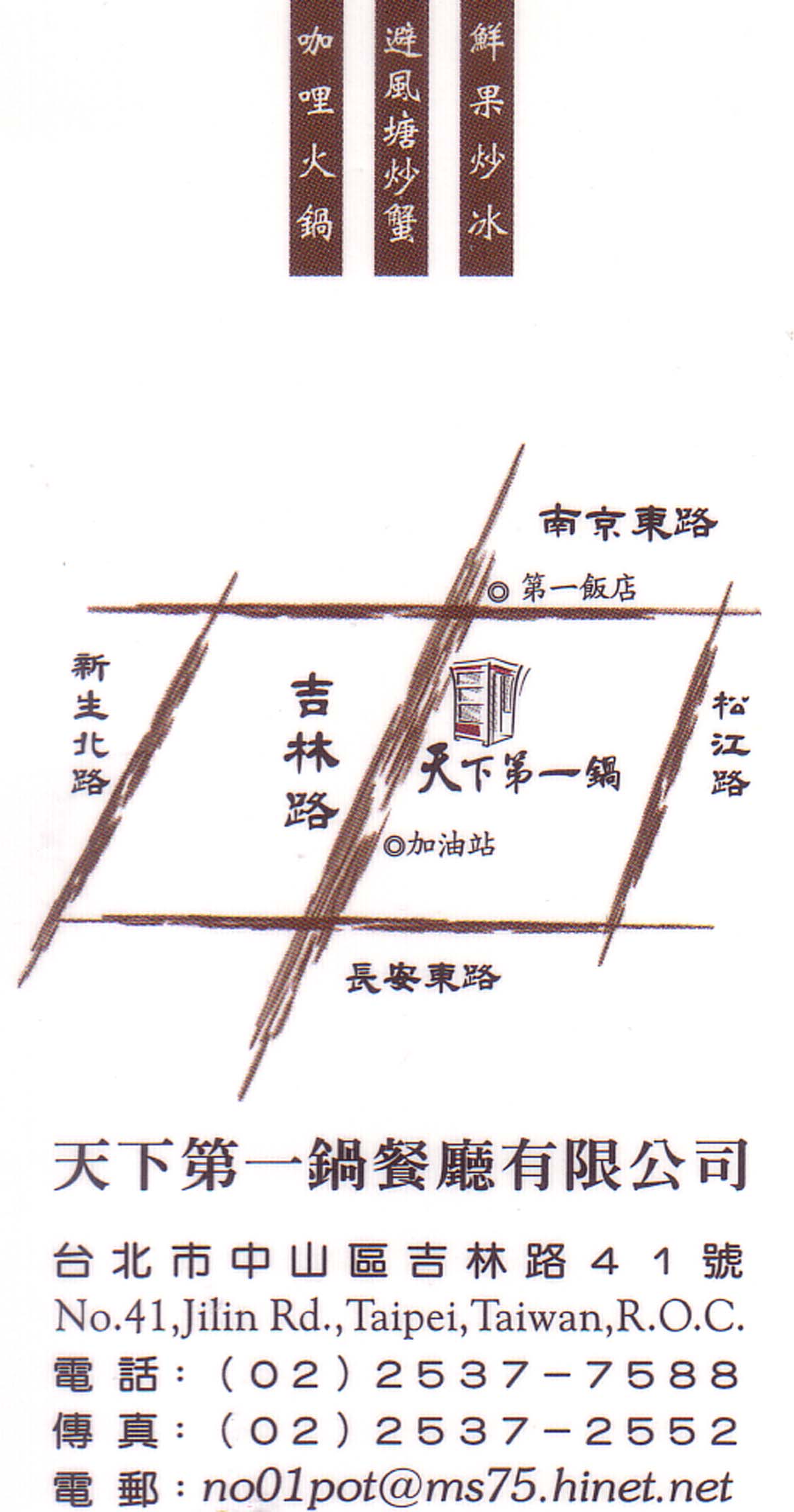 NUMBER 1 HOTPOT is at 41 Jilin Road; Taipei; telephone: (02) 2537-7588; it is a place for a fantastic treat. Paul Ho who owns and oversees it all chatted with us. We saw his many accolades and awards. This delightful man deserves them all. The variety and quality of ingredients presented for us to cook in a pair of broths was top of the line. The were a delight to see and to taste. His bubbling complex broths, one plain and the other a perfect piquant curry creation, brim with flavor. It was delicious to devour them and the contents we cooke in them. The soups, after we finished cooking the foods presented, did fill any mini-cracks remaining. They were simply marvelous.
NUMBER 1 HOTPOT is at 41 Jilin Road; Taipei; telephone: (02) 2537-7588; it is a place for a fantastic treat. Paul Ho who owns and oversees it all chatted with us. We saw his many accolades and awards. This delightful man deserves them all. The variety and quality of ingredients presented for us to cook in a pair of broths was top of the line. The were a delight to see and to taste. His bubbling complex broths, one plain and the other a perfect piquant curry creation, brim with flavor. It was delicious to devour them and the contents we cooke in them. The soups, after we finished cooking the foods presented, did fill any mini-cracks remaining. They were simply marvelous.
The twenty-inch round platters of to-be-cooked items came piled high with clams, octopus, enoki mushrooms, fish maw, tripe, intestine, soy sprouts, and dumplings of all sizes, shapes and fillings. With them were huge prawns and more, all atop noodles and vegetables. Were they not enough, a smaller platter equally loaded arrived partway through the meal. It had prime U.S. beef, local and lovely pork, boned crab, steamed fish, sliced fried crullers–their yaotai--hot peppers, water chestnuts, and more. Dips, sauces, and other accompaniments were on the table ready to titillate personal preferences and flavor the raw ingredients. The broths could not have been better. Hands down, this restaurant is what its name proudly boasts, 'Number One.'
 ALISHAN HOUSE RESTAURANT is at 16 West Alishan in the Shah Lin Village of Alishang County; Taiwan; phone: (05) 2679811-6 is in the recreation area of the same name. Its forest is as lovely as the small train circling it. We opted to hike and were glad we did. The Mien-Yueh Monkey Rock, Museum, Shou Cheng Temple, Pagoda of the Tree Spirit, and other sights were worth meandering to. When truly hungry, we went to the hotel, took the elevator to the top-floor, enjoyed the views, and ate very fine food. This Chow-Lee Hotel outpost uses wonderful local foods prepared by Chef Chiang, a thirty-three year old with eighteen years of culinary experience.
ALISHAN HOUSE RESTAURANT is at 16 West Alishan in the Shah Lin Village of Alishang County; Taiwan; phone: (05) 2679811-6 is in the recreation area of the same name. Its forest is as lovely as the small train circling it. We opted to hike and were glad we did. The Mien-Yueh Monkey Rock, Museum, Shou Cheng Temple, Pagoda of the Tree Spirit, and other sights were worth meandering to. When truly hungry, we went to the hotel, took the elevator to the top-floor, enjoyed the views, and ate very fine food. This Chow-Lee Hotel outpost uses wonderful local foods prepared by Chef Chiang, a thirty-three year old with eighteen years of culinary experience.
For a beginning, two small dishes whet appetites further; one with dark green seaweed slivers, the other with local herbs and roots. Both were piquant and perfect. Both were tributes to regional herbal availability. Following them came a huge bowl of Shark’s Fin Soup and a bountiful dish of Belly Pork with locally located dried bamboo shoots. The meat was sandwiched between reconstituted dry bok cai and coarsely minced Chinese parsley. Around these were a plethora of fresh and dried shrimp and squid, loads of slivers of ham, and a handful of shark’s fin pieces; all swimming in broth. This was a true treat!
Braised Beef Tendons chock-full of whole quail eggs, red and green pepper pieces, melting mouth peas, tiny fresh shrimp, and a mass of chopped garlic were mixed in. Yummy is an understatement for this dish and the dozen delicious dishes that followed. Each had a medley of local produce, herbs, and meats, one better than the next. Every dish was a testament to this chef's top-of-the-line talent and those who scoured the recreation area for their fantastic flavorful herbals.
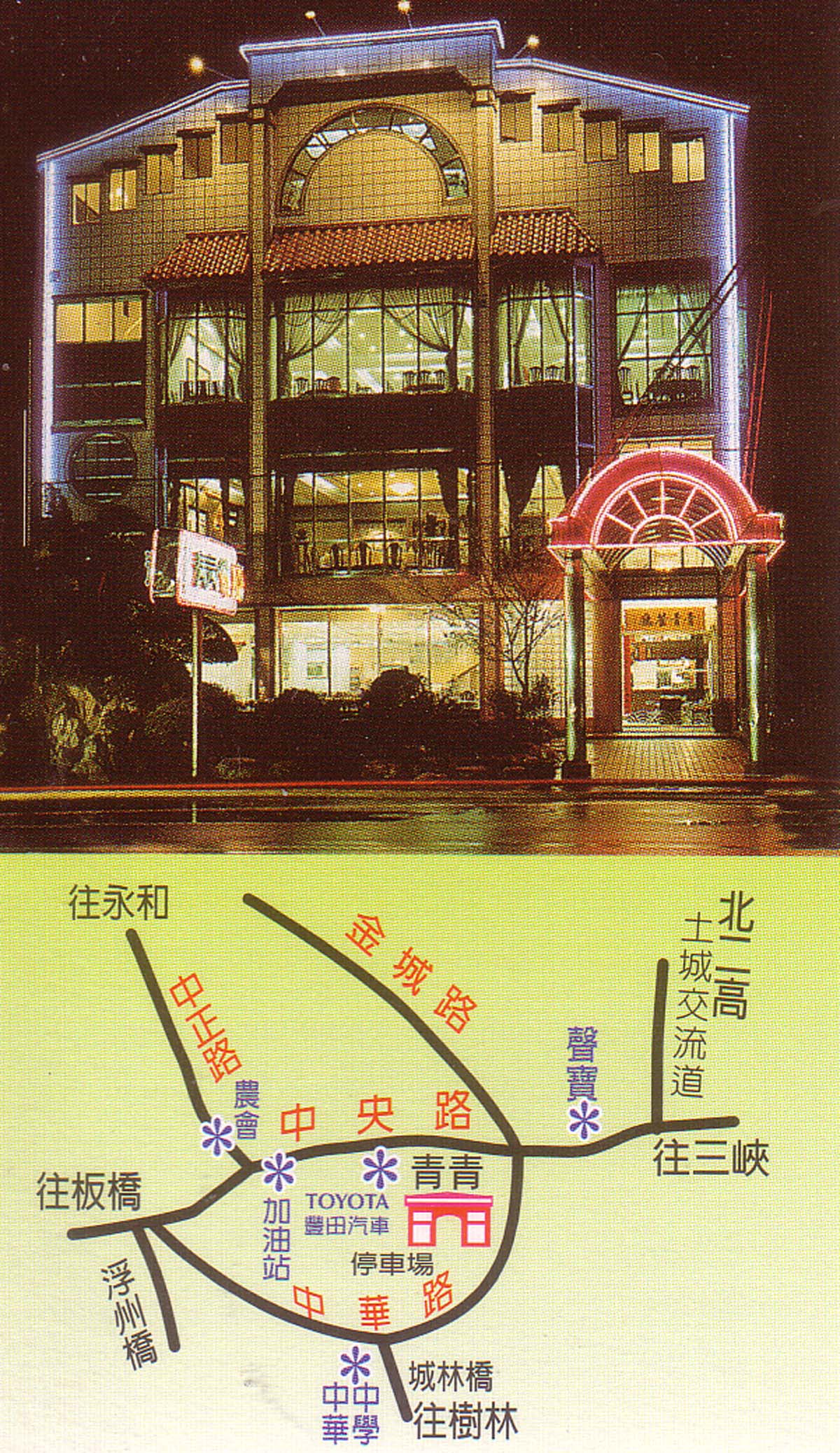 CHIN CHIN in Tuchan; phone: 2269-1127 is half block from a huge Toyota dealer. Also known as Evergreen, chef Shih Jian Fa and his mom run a great seafood eatery amid twenty-story apartment buildings on the outskirts of Taipei. Some ten to fifteen miles from downtown, only a few cars were around when our bus arrived.
CHIN CHIN in Tuchan; phone: 2269-1127 is half block from a huge Toyota dealer. Also known as Evergreen, chef Shih Jian Fa and his mom run a great seafood eatery amid twenty-story apartment buildings on the outskirts of Taipei. Some ten to fifteen miles from downtown, only a few cars were around when our bus arrived.
This multi-floor facility specializes in Taiwanese seafood. It is also known for its banquets. We had one on the lower level. On the way down we past a huge sushi bar. At our tables were magnificent rosettes of wasabi at each place setting. A waitress poured soy sauce around it and set a huge platter of raw fish and a bowl of huge black beans in the table's center. The beans looked like perfect pebbles for a game of 'go.' In the middles was an ice sailfish, the logo of the eatery.
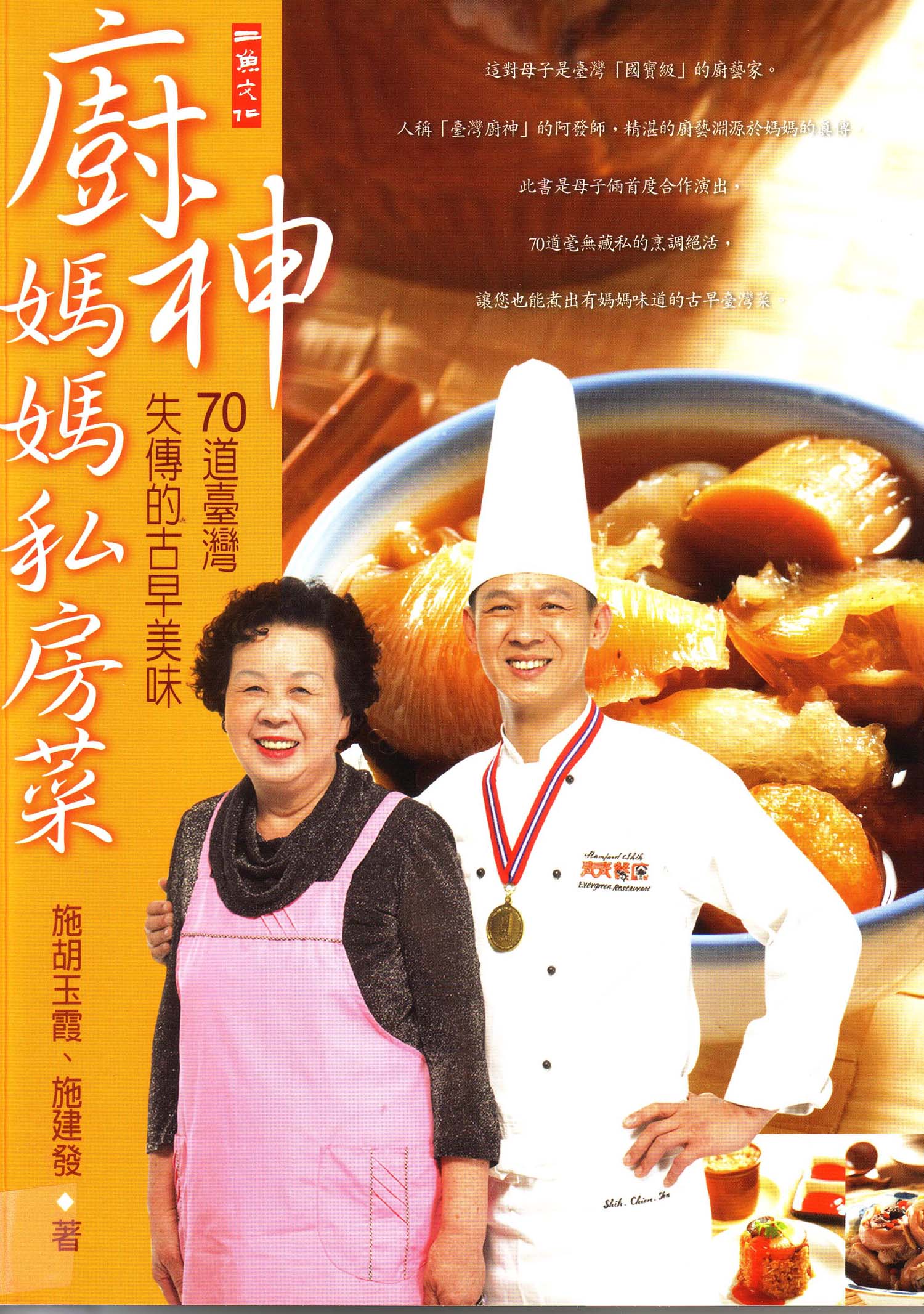 After this cold starter, we enjoyed roasted and fried eel, salmon wrapping juicy red onions, an outstandingly juicy pair of abalone preparations returned to a shell, and more. Ten courses followed beginning with a dish of salmon eggs, tiny sprouts, guava, and tofu. All of these melted in the mouth. A cold seafood combo followed, and on its heels, an eight-item Buddha Jumps the Wall dish. This delicious Fujianese dish burst with sea and land creatures.
After this cold starter, we enjoyed roasted and fried eel, salmon wrapping juicy red onions, an outstandingly juicy pair of abalone preparations returned to a shell, and more. Ten courses followed beginning with a dish of salmon eggs, tiny sprouts, guava, and tofu. All of these melted in the mouth. A cold seafood combo followed, and on its heels, an eight-item Buddha Jumps the Wall dish. This delicious Fujianese dish burst with sea and land creatures.
Our hosts were most gracious and presented those from afar with an autographed cookbook, theirs. It was in Chinese. The pictures alone were super and savory. (for you to get one, know that its © is 2004; its ISBN 986-7642-67-8). Mother and son smile on its cover and they did so throughout the marvelous meal. Can still recall their terrific hospitality and the super Taiwanese seafood we had there.
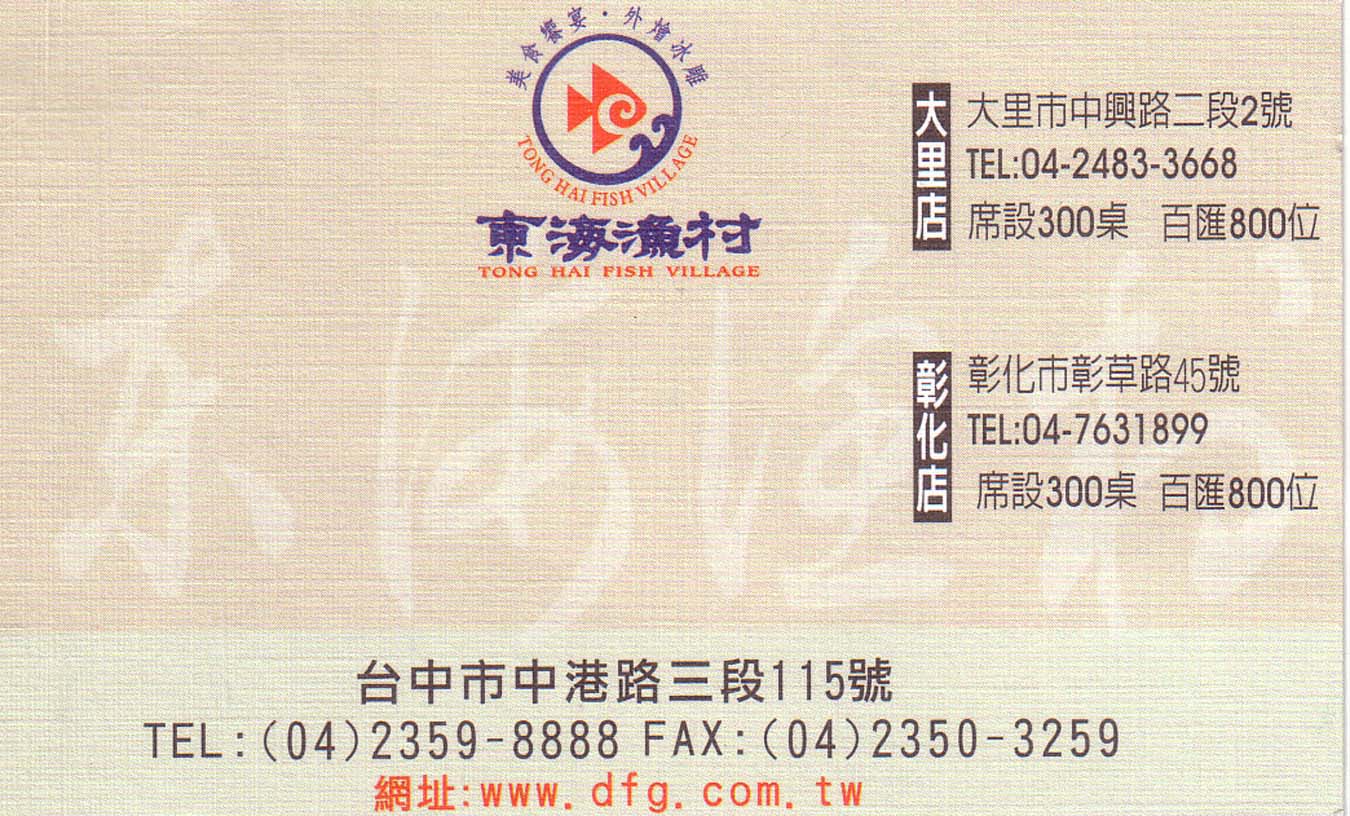 TONG HAI FISH VILLAGE at 636 Wen Hsin Road is in Taichung; phone: 04-2359-8888;it was an unexpected stop as a typhoon forced our return to Taipei. Roads were washed out and a call-ahead to this mega-restaurant was arranged hastily. Run by the China Trust Hotel Group, we were sorry to cut touring short but thrilled to have the opportunity to see and taste foods at this massive eatery.
TONG HAI FISH VILLAGE at 636 Wen Hsin Road is in Taichung; phone: 04-2359-8888;it was an unexpected stop as a typhoon forced our return to Taipei. Roads were washed out and a call-ahead to this mega-restaurant was arranged hastily. Run by the China Trust Hotel Group, we were sorry to cut touring short but thrilled to have the opportunity to see and taste foods at this massive eatery.
On the way in were huge fish tanks. People approach them with waiter in tow to select their majin dish swimmers. The waiters discuss ways to prepare them and individual wishes are passed on to the kitchen staff who execute them exactly as requested. This is no small feat as this restaurant probably seats thousands. It is bigger than several football fields and has dozens of private rooms around it. Fifty of us dined in a large one that easily could accommodate twice that number.
A large plate of marinated cold chicken, warm walnuts, various raw fish atop red and white onion slivers began our repast. Fish and chicken were on it but under mounds of mayo. Next to all of these was a small plate of finger-nail size clams and garlic pieces twice as big. Keeping them company was wasabi paste and soy sauce, and an abalone shell filled with several different mustards.
Loaded seafood soup came with shrimp balls, black forest mushrooms, bean sprouts, scallions, enoki mushrooms, strips of bamboo shoots, and more types of fish and more clams we could identify. Black vinegar was there to indulge those who wanted to season theirs sour.
Ignorance as to what was next overtook all foodies until we tasted what we thought was a huge plate of plain pasta. No ordinary noodles, these, they were made with pumpkin flour and considered a local speciality. And truly special they were. Later we learned the noodles were made not just with pumpkin flour but with that and rice flour.
Dong Su Pork was another delicious dish that arrived mountain high. On top was a high hill of slivered fresh ginger. Green-tipped baked clams (not mussels) came on their shells topped with more mayo and even grated cheese. Looked western but amazingly tasted Asian.
Almost a dozen dishes made up our meal. They all looked simple but tasted super and savory. One of them was a whole stuffed fish bursting with a dozen seafood ingredients. Rice noodles wrapping huge shrimp, themselves wrapped in lettuce cups was another. Green vegetables swimming in garlic sauce was a third. Turtle soup on a propane burner came thereafter. And then came sweet desserts. The last course was a sweet soup, or so we thought. A huge platter of watermelon slices and bowls of fresh cherries really ended this seafood spectacular.
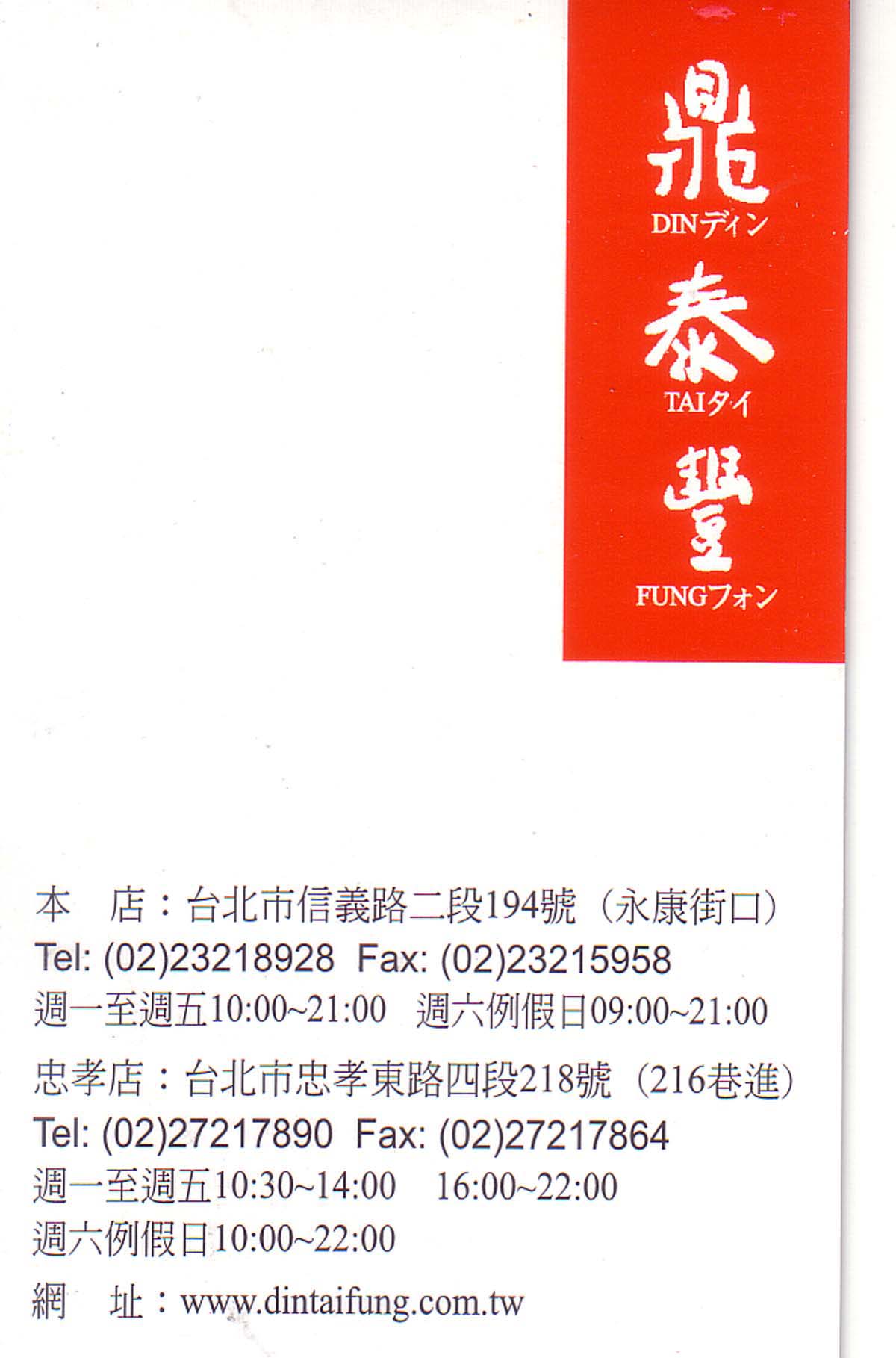 DIN TAI FUNG at 194 Xin Yi Road is in Taipei; phone: 02-2321-8928. This small, tall, unpretentious dumpling restaurant is popular beyond belief. All four floors are always full and the sidewalk in front always loaded with waiting folk, every day that is but Monday. Then it is closed, as it is daily from 2:00 to 5:00 pm. They open eight in the morning and close some minutes after eight in the evening. Their steamed dumplings and other fine foods draw crowds even though they cost a mite more than other places. Terrific tastes make them worth every Taiwan dollar.
DIN TAI FUNG at 194 Xin Yi Road is in Taipei; phone: 02-2321-8928. This small, tall, unpretentious dumpling restaurant is popular beyond belief. All four floors are always full and the sidewalk in front always loaded with waiting folk, every day that is but Monday. Then it is closed, as it is daily from 2:00 to 5:00 pm. They open eight in the morning and close some minutes after eight in the evening. Their steamed dumplings and other fine foods draw crowds even though they cost a mite more than other places. Terrific tastes make them worth every Taiwan dollar.
Known for both soups and dumplings and their dumplings in soups, people wonder how they get the soup into the dumplings. Here is the secret: Fillings are mixed with gelled broth that already has minced pork, ginger, and scallions within. Many are steamed on cabbage leaves, all taste terrific, all dough is stretchy and picture perfect. Can not get to Taiwan where Chef-owner Yang Chihua has several outlets, try his Tokyo, Hong Kong, Singapore, even Los Angeles eateries.
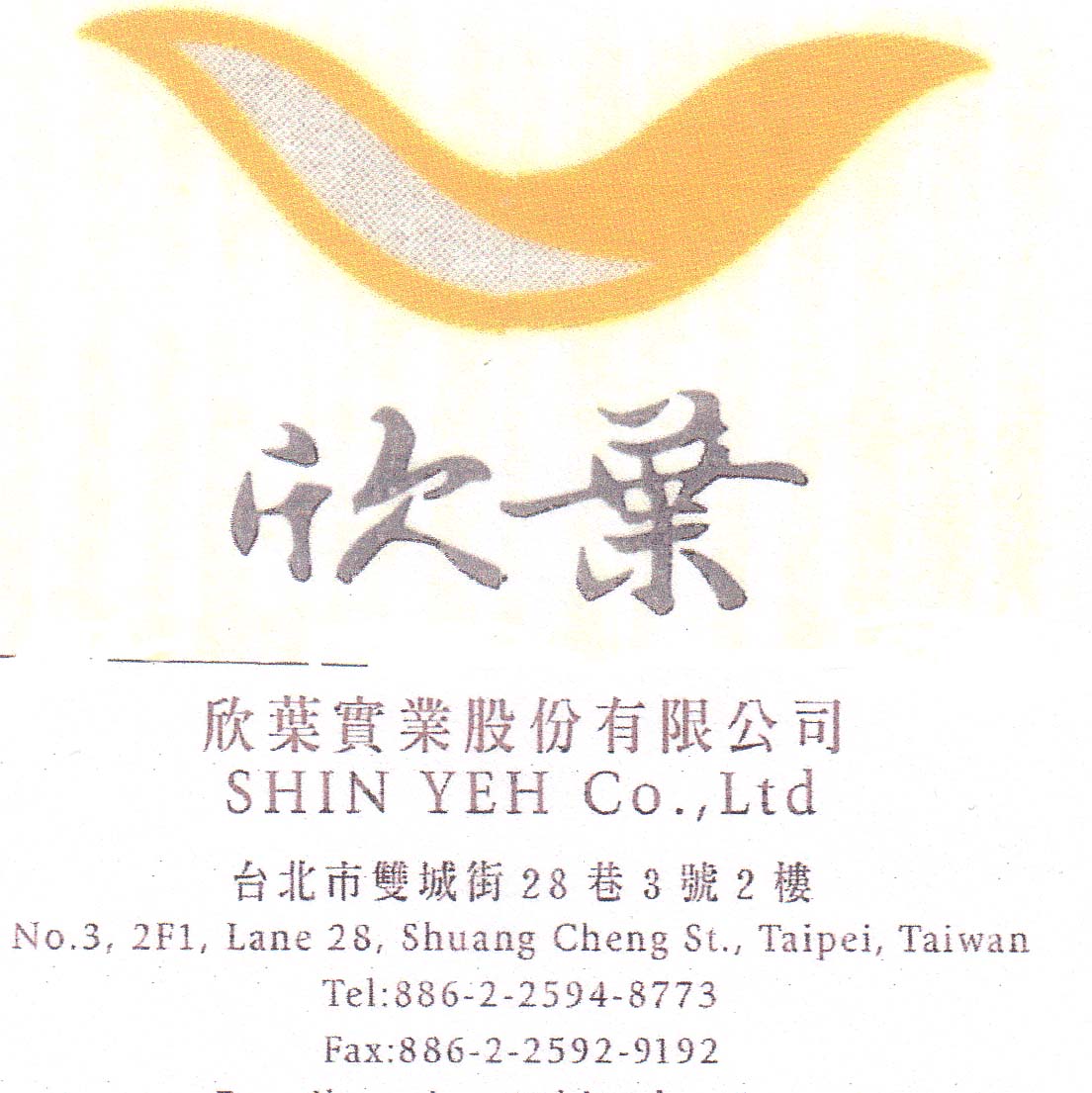 SHIN YEH No. 3 on Lane 28 off Shuang Sheng Street; phone: 2594-8773 is another great place. It has many eateries in Taiwan, some classic, all popular Taiwanese restaurants. The chain was founded in 1977, and now has seventeen locations, all different, all very good, not all Chinese, not all in Taiwan. Some are Japanese, Chinese, or combinations of both, and a couple are actually in Japan. This organization published five hundred traditional recipes but unfortunately, their book is only in Chinese or Japanese.
SHIN YEH No. 3 on Lane 28 off Shuang Sheng Street; phone: 2594-8773 is another great place. It has many eateries in Taiwan, some classic, all popular Taiwanese restaurants. The chain was founded in 1977, and now has seventeen locations, all different, all very good, not all Chinese, not all in Taiwan. Some are Japanese, Chinese, or combinations of both, and a couple are actually in Japan. This organization published five hundred traditional recipes but unfortunately, their book is only in Chinese or Japanese.
The Buddha Jumps Over the Wall we had there is a classic. It is pictured on the cover of Volume 13, Number 1 of this magazine. Pancake Squash with Peanuts is perfect. Spring Rolls Taiwan Style are called Lumpia here, and with not a single lump, they melt in the mouth. Squid with Yao tai is in a sweet and sour sauce loaded with carrots, mushrooms, kidney, and jellyfish pieces. Leek with thousand-year eggs is a dish filled with Chinese chives and pork. Their cuttlefish balls are not to be missed; nor should a trip to at least one other of their eateries.
One of their restaurants only serves the Japanese cook-it-yoursef dish called shabu shabu. Another has and is called Curry Champ. It has divine curry dishes. Check out their website for which locations serve which foods. it is at: www.shinyeh.com.tw and, do try many good dishes at their many different locations, as we did.
TAIPEI'S NIGHT MARKETS do offer menay snacks and eateries, all worth seeing and many worth indulging at. The Jao Ho Night Market at the north end of Kee Lung Road is loaded with culinary temptations. There and elsewhere we dig into varied lovely local snack foods, quite a few available at the Taipei Chinese Culinary Exposition. They and others listed in a brochure called Local Snacks of Taiwan. It includes thirty-one, less than half from places in or near Taipei. Should you want next year's brochure and map of places and listings, contact the Tourism Bureau of the Ministry of Transportation and Communications or the Taiwan Visitors Association. We could not taste all of them, try as we did, so what follows are only those remembered that stand out in our minds. Perhaps next year we can stay longer and try many more not only at the exhibition but also on their home turf.
In the interim, do try the Taipei Rice Noodle Soup and the Stewed Intestines from LIAO-CHIAO at 93 Chen-du Road is the Wanhwa District of Taipei; phone: (02) 2381-8316. Also in Taipei, we recall the Gua Bou buns as delicious as was their Four Spirits Soup. These were made by LAN'S GUA_BOU at No. 3 Alley; Lane 8-316; Section 3; Roosevelt Road; phone: 2368-2060. Also from Taipei, try the Hakka Salty Rice Dumplings. They were great and from the YI-SHIANG GARDEN HAKKA at No. 152 Section 1; Chung-Shiao E. Road; Taipei; phone: 3393-2729.
Delicious duck is a speciality of Ilan County. We devoured slices and dishes with it in a variety of ways. The spicy ones are not to be missed from DR. DUCK LIVESTOCK PRODUCTS at 49-1 Tiansiang Road; Loudong Township; phone: 03957-2275-6. Shrimp Rolls were another mouth-watering treat. The ones we had were from CHOU'S SHRIMP ROLLS at 408 An-Ping Road; Tainan City; phone: 06280-1304. The Mushroom Rice, Mushroom Stew, and dishes with mushrooms and dried bamboo shoots we can still taste were from JI-BEN FARM PRODUCTS at No. 6; Lane 82 on Ming Tze Street in Benqiao City; phone: 0927-171689. They, too, are terrific and not to be missed. The above were but a few of the many wonderful local snacks awaiting us and you in and near Taiwan.

Copyright © 1994-2025 by ISACC, all rights reserved
Address
3 Jefferson Ferry Drive
S. Setauket NY 11720